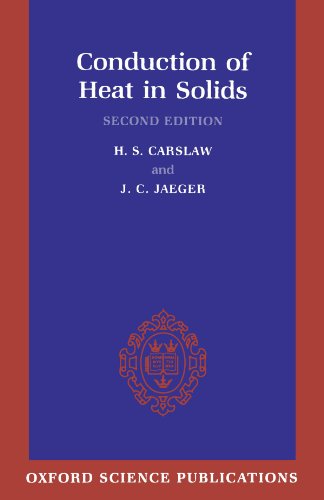Conduction of Heat in Solids ebook download
Par shipe joe le lundi, janvier 16 2017, 11:34 - Lien permanent
Conduction of Heat in Solids by H. S. Carslaw, J. C. Jaeger


Conduction of Heat in Solids ebook download
Conduction of Heat in Solids H. S. Carslaw, J. C. Jaeger ebook
Format: djvu
Publisher: Oxford University Press, USA
ISBN: 0198533683, 9780198533689
Page: 517
Heat Conduction: Lumped System Analysis – Heat Transfer in Semi infinite and infinite solids – Use of Transient – Temperature charts – Application of numerical techniques. Here are quick definitions, how they apply to your attic, and how to fix them: 1. For example, metals are better conductor than wood or plastic. Conduction Heat transfer always takes place by areas of high heat energy migrating to areas of. In this type of heat transfer, molecules don't move but they transfer energy using vibrations. UNIT II CONVECTIVE HEAT TRANSFER 10. Conduction is essentially heat transfer through solids. Heat from the part of the system to another part of or by a system to another of the system that heat conduction phenomenon. (c) Metals are good conductors of heat whereas wood is a poor conductor of heat (i.e. Conduction is the one of three types of heat transfer in which thermal energy transfers from one point to another through the interaction between the atoms or molecules of the matter. An insulator).Discuss this statement with reference to the mechanism of thermal energy transfer in solids. Heat Conduction takes place in solids, liquids, and gases, but works best in materials that have simple molecules that are located close to each other. ΔT = temperature difference between two systems. There are three main forms of heat transfer which are commonly referred to within the process engineering industry: Conduction. Heat transfer heat transfer is one of three basic styles. You can then apply the principles of Carlaw & Jaeger's 1947 Conduction of Heat in Solids to come up with an estimate for the cooking time. Because molecules are farther apart in gases than in solids, the gases are much poorer conductors of heat. Students know heat flows in solids by conduction (which involves no flow of matter) and in fluids by convection (which involves flow of matter).